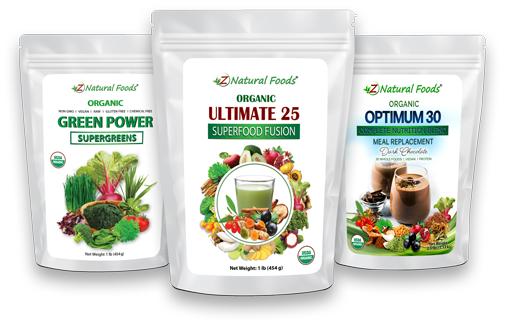Description
Description
Hawaiian salt (pa'akai in the native language) is more than just a kitchen essential - it is a sacred mineral with strong spiritual, medicinal and culinary traditions among native Hawaiians. Páakai has been part of daily life, from ancient healing rituals to ceremonial blessings and the preparation of island dishes. It's a salt prized as much for its robust, earthy taste as its cultural significance to land and sea.
Harvested by hand using methods handed down for centuries, traditional Hawaiian salt indicates a relationship with nature that some modern chefs, holistic wellness seekers and culturally aware consumers are renewing. Take a look at conventional Hawaiian salt. Its history and cultural roots, Types and characteristics, Health benefits, & where to buy quality Hawaiian salt prepared with tradition.
What is Traditional Hawaiian Salt?
Traditional Hawaiian salt is unrefined sea salt harvested from coastal salt beds in Hawaii using ancient methods. It's valued for its mineral-rich profile, deep flavor, and spiritual importance in Native Hawaiian ceremonies.
This salt was essential to ancient Hawaiian life for:
-
Food preservation
-
Healing remedies
-
Blessings and purification rituals
Unlike industrial table salt, Hawaiian salt retains natural minerals and is free of synthetic additives.
A Glimpse Into History
The word paʻakai means “to solidify the sea,” reflecting the physical and spiritual value of salt in Hawaiian society.
Salt was used for:
-
Preserving fish and meat (e.g., kalua)
-
Trading between islands
-
Spiritual purification before rituals
-
Healing wounds and ailments
Salt beds (salt pans) were family-kept and passed down through generations. These beds, particularly in Hanapēpē on Kauaʻi remain among the islands' last functioning traditional salt-making sites today. (Source)
Types of Traditional Hawaiian Salt
Each salt type varies in mineral content, color, and use. Here’s a comparison of the three most popular traditional Hawaiian salts:
Type Color Main Ingredient Flavor Profile Uses
|
Type |
Color |
Main Ingredient |
Flavor Profile |
Uses |
|
Alaea Salt |
Reddish |
Volcanic red clay (ʻalaea) |
Earthy, robust |
Kalua pork, poke, ceremonial use |
|
Black Lava Salt |
Black |
Activated coconut charcoal |
Smoky, bold |
Finishing meats, salads, detox practices |
|
White Sea Salt |
White |
Pure evaporated seawater |
Clean, briny |
Everyday cooking, baking, pickling |
Popular Culinary Applications:
-
Kalua Pig: Rubbed with Alaea salt and cooked underground in an imu.
-
Poke: Raw fish cubes seasoned with Alaea or white salt.
-
Lomi-Lomi Salmon: Salmon salted, diced with tomatoes and onions.
-
Grilled Meats: Black lava salt offers a smoky finish.
-
Vegan Dishes: Add mineral-rich flavour without processed ingredients.
Many chefs prefer Hawaiian salt over table salt due to its coarser texture, rich mineral composition, and complex taste.
Health Benefits of Hawaiian Salt
Unlike iodised salt, traditional Hawaiian salt is naturally sun-dried and retains a wealth of beneficial minerals.
Key Nutritional Benefits:
-
Iron (in Alaea): Supports red blood cell production and energy.
-
Magnesium: Regulates nerve and muscle function.
-
Potassium: Balances fluid levels and boosts cardiovascular health.
-
Charcoal (in Black Lava Salt): Known for detoxification support. (Source)
Moreover, its lower sodium content than table salt makes it a preferred choice for those on heart-conscious diets. (Source)
Cultural and Spiritual Significance
In Hawaiian tradition, salt is not just a seasoning — it is a conduit of mana (spiritual energy).
Ceremonial Uses:
-
Blessings & Cleansings: Salt is sprinkled to purify spaces.
-
Healing Practices: Applied to wounds or consumed with herbal blends.
-
Offerings: Presented at altars (heiau) to honor gods and ancestors.
Many families in Hanapēpē continue to produce salt today, preserving sacred knowledge and rituals passed down for generations. This form of salt-making is considered a cultural practice protected from commercial exploitation. (Source)
Where to Buy Authentic Hawaiian Salt
To ensure authenticity and support native practices, purchase only from reputable sellers using traditional methods and from Hawaiian salt beds.
Trusted Sources:
-
Sea Salts of Hawaii: Variety of artisan salts harvested traditionally.
-
Kona Sea Salt: Deep ocean salt known for ultra-purity and mineral richness..
Experience the rich, authentic flavor of Hawaii with Z Naturals' Traditional Hawaiian Salt and elevate every dish naturally.
Sustainability and Preservation
Due to climate change and urban development, salt pans in Hawaii are at risk. Supporting authentic Hawaiian salt not only helps local communities but also contributes to cultural preservation.
Final Thoughts
Traditional Hawaiian salt is far more than a culinary ingredient, it is a living legacy steeped in culture, spirituality, and deep respect for nature. With its mineral complexity, pristine origin, and handcrafted harvesting methods, this salt captures the very essence of the Hawaiian islands. It reflects aloha ʻāina (love of the land) and pono (righteousness and balance), values that have guided Native Hawaiian life for centuries.
Each grain is a product of patience, passed down through generations using techniques that preserve the practice's environment and integrity. Using traditional Hawaiian salt enriches your meals with heritage, supports indigenous communities, and keeps sacred stories alive for future generations. In a modern world that often forgets the slow, sacred ways of the past, this salt reminds us to taste, remember, and give thanks.
